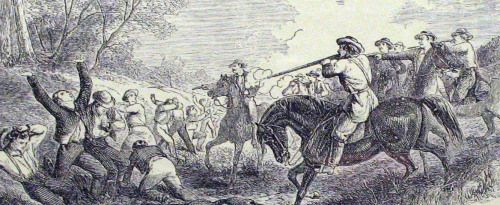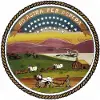The Making of the 50 States: Kansas
Part 2: The Rest of the Story 
Congress's passing of the Kansas-Nebraska Act in 1854 established the Kansas Territory (which also included part of what is now Colorado) and determined that whether the people of Kansas would allow slavery would be left up to Popular Sovereignty, an idea championed by Stephen A. Douglas that let the residents of a new territory or state vote for themselves on the question of slavery. This was, in part, a contravention of the terms set out in the Missouri Compromise, which had set up a geographical border to divide "free states" from "slave states." 
One state that did allow slavery was Missouri, Kansas's neighbor to the east. Missouri had been a state since 1820, and many people from Missouri were used to crossing the border into Kansas territory and even settling there. Support was strong both for and against slavery in Kansas, and many disagreements turned violent. The territory became known as "Bleeding Kansas". One well-known abolitionist (one who opposed slavery) was John Brown, who lived in Kansas for a time. Brown took part in the Pottawatomie massacre, in response to the Sacking of Lawrence by Samuel Jones and others. The territory even had dueling capitals with dueling constitutions (Lecompton and Leavenworth) for a time. 
Eventually, a majority of Kansas residents adopted a constitution that outlawed slavery, and Kansas became a state on Jan. 29, 1861; the capital was Topeka. First page > In the Beginning > Page 1, 2 |
|
Social Studies for Kids
copyright 2002–2024
David White




